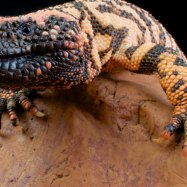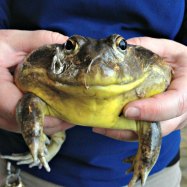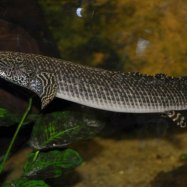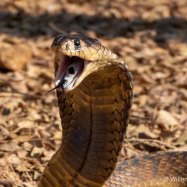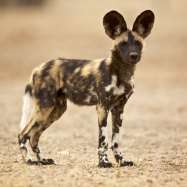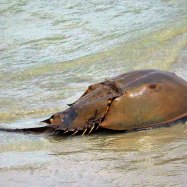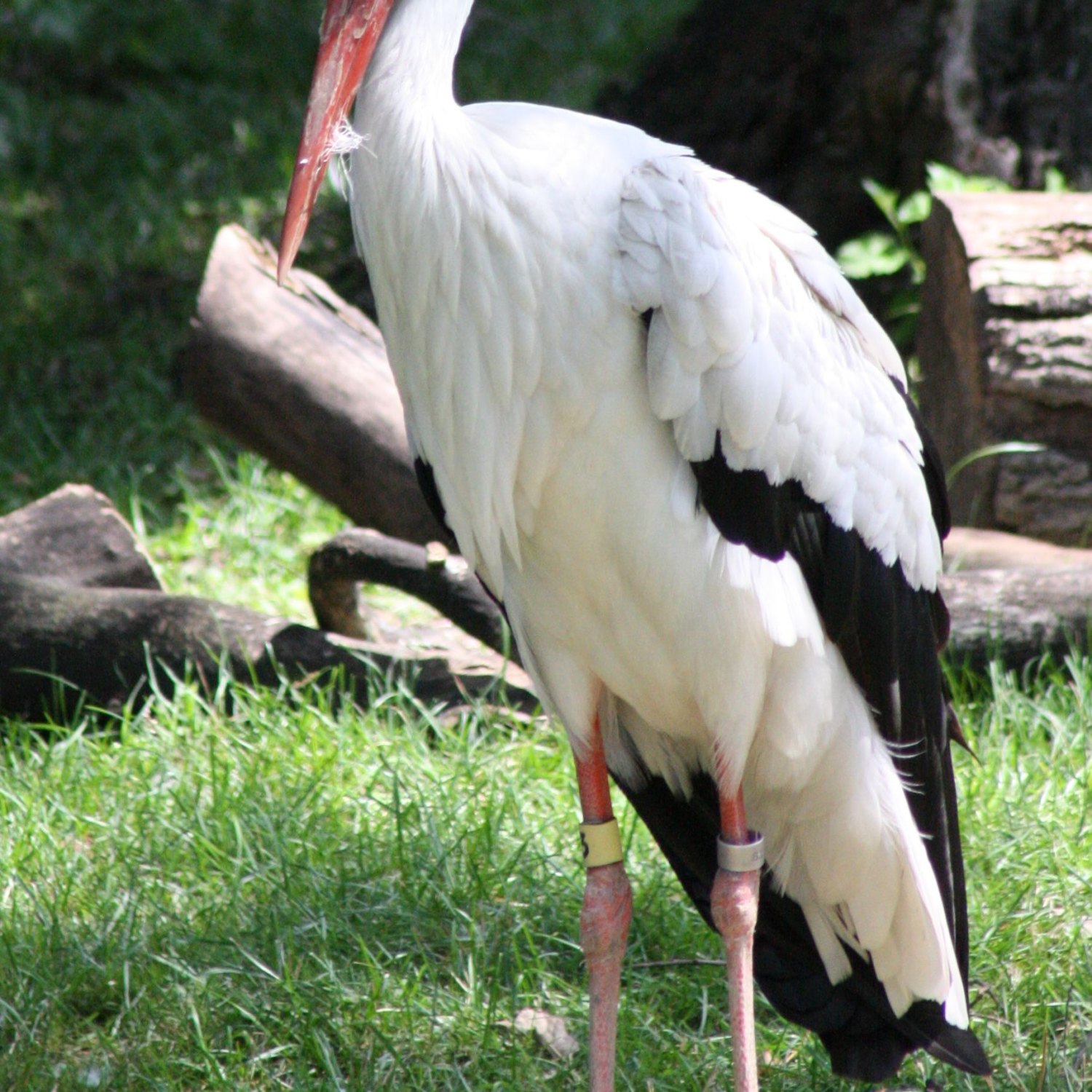
Stork
Varies depending on the species (ranging from 60 to 150 cm)
The stork, with its iconic appearance and long, elegant legs and neck, varies in size from 60 to 150 cm depending on the species. Belonging to the Ciconiidae family, these graceful birds can be found in various locations around the world. Keep an eye out for these magnificent creatures in their natural habitats! #Stork #Ciconiidae #Birds #Nature #Wildlife
Animal Details Summary:
Common Name: Stork
Kingdom: Animalia
Habitat: Wetlands, grasslands, and forests
The Majestic Stork: Nature’s Graceful Bird
Nature has a way of creating magnificent creatures that capture our attention and admiration. Some animals stand out with their vibrant colors, unique body structures, or impressive abilities. But there is one bird that has all of these qualities, making it truly remarkable – the stork.With its striking appearance and elegant movements, the stork is undoubtedly one of the most fascinating birds in the animal kingdom Stork. Found in various parts of the world, this avian species has captured the hearts of many and has become a symbol of grace, wisdom, and fertility. In this article, we will delve into the world of storks, uncovering their incredible features and intriguing behaviors.
The Basics of Storks
The scientific name of storks is Ciconiidae, and they belong to the kingdom Animalia, under the phylum Chordata and class Aves. There are currently 19 species of storks, classified under the order Ciconiiformes and family Ciconiidae. These birds are mostly found in wetlands, grasslands, and forests, with habitats ranging from tropical regions to temperate zones.One of the most notable features of storks is their feeding method, as they are carnivorous birds. They primarily feed on small animals such as frogs, snakes, insects, and fish, using their sharp beaks to catch and consume their prey. Their diet also includes reptiles, mollusks, and even small mammals.
Distribution and Origin
The geographical distribution of storks covers a vast expanse of the globe, with species found in Africa, Europe, Asia, and America Sauropoda. Each region is home to different species, and their country of origin also varies. The African storks, for example, are native to Sub-Saharan Africa, while the European stork is found in parts of Europe, namely in Spain and Portugal.Different species of storks have different preferences when it comes to their locations. Some prefer to build their nests near water sources, while others prefer trees or man-made structures such as poles and rooftops. Many storks migrate to warmer regions during the winter season, while some species are resident birds and do not migrate at all.
The Beautiful Coloration and Body Shape of Storks
One of the most striking features of storks is their coloration. Most species have mainly white feathers, which give them a pristine and elegant appearance. Their flight feathers, however, are usually black, providing a beautiful contrast to their white bodies.Apart from their striking coloration, storks are also known for their tall and slender body shape. They have long legs and necks, which give them a distinctively elegant appearance. This body structure also allows them to wade through shallow water with ease, making it easier for them to catch prey.
The size of storks varies depending on the species, with the smallest being the Black-necked stork, measuring around 60 cm in length, and the largest being the Marabou stork, reaching up to 150 cm in length. In terms of weight, storks can range from 2 to 9 kg, depending on the species.
The Unique Traits and Behaviors of Storks
Aside from their physical characteristics, storks also possess unique traits and behaviors that make them stand out among other birds. These characteristics have fascinated researchers and nature enthusiasts for centuries.Monogamous Breeding and Courtship
Storks have a strong bond with their partners, often maintaining a monogamous relationship for many years. This is especially evident during the breeding season, where storks engage in elaborate courtship behaviors to attract and impress their mate.What makes storks’ courtship behavior special is their unique way of communicating with their partners. They engage in bill-clacking, where they rapidly snap their beaks together, creating a loud and rhythmic sound. This behavior signals to their partner their willingness to mate and their desire to maintain a strong bond.
The Unforgettable Sight of Storks in Flight
Storks are known for their impressive flying ability, often gliding gracefully in the air for hours. They have strong and broad wings, which enable them to cover great distances with ease. This is particularly important for storks that migrate to other regions to find food or breed.The sight of a flock of storks flying in a characteristic V-formation is truly a spectacle to behold. Not only does it allow them to conserve energy during long flights, but it also serves as a way for them to communicate and navigate with each other.
The Fascinating Nesting Habits of Storks
Storks are known for their unique and impressive nesting habits. They often build their nests high up in trees or on man-made structures, away from predators. What makes their nests remarkable is that they are huge and often measure up to 2 meters in diameter. These nests are also sturdy and can last for several years.Moreover, storks are also known for their communal nesting behavior, where multiple pairs of storks build their nests close to each other. This provides them with a sense of security and helps them bond with other storks in their community.
The Symbolism and Cultural Significance of Storks
Storks have been connected to various symbols and beliefs throughout history. In ancient Egypt, they were seen as symbols of the sun god, Ra, and were associated with fertility and rebirth. In Greek mythology, storks were believed to bring babies to families, and in some cultures, they were seen as harbingers of good luck and fortune.This cultural significance can also be seen in modern-day society, with storks being the inspiration for many children's stories and popular media. In many countries, storks are protected and valued, with some communities even hosting special festivals to celebrate their arrival during the breeding season.
The Threats and Conservation Efforts for Storks
Like many other animal species, storks face threats and challenges that can impact their population and survival. Habitat loss due to human activities such as deforestation and pollution is a significant concern for storks, as it affects the availability of food sources and nesting sites.Moreover, illegal trade and hunting also pose a threat to storks, with their body parts being used for various traditional medicinal practices in some countries. Climate change can also have adverse effects on their migration patterns and food availability, further endangering their population.
To protect storks and their habitats, conservation efforts have been implemented in various regions worldwide. Protected areas have been established, and efforts are being made to raise awareness about the importance of preserving these magnificent birds. Additionally, organizations such as the International Union for Conservation of Nature (IUCN) have listed some stork species as endangered and have implemented conservation strategies to safeguard their future.
Conclusion
The stork is truly a remarkable and fascinating creature, with its striking looks, unique behaviors, and cultural significance. Despite facing numerous threats, storks continue to grace our wetlands, grasslands, and forests, reminding us of the beauty and diversity of nature.Whether you have the privilege of spotting a stork in its natural habitat or simply observing them in children’s books and movies, these majestic birds will undoubtedly leave a lasting impression on you. So let us appreciate and protect these graceful birds, ensuring that future generations will also have the chance to marvel at their beauty.

Stork
Animal Details Stork - Scientific Name: Ciconiidae
- Category: Animals S
- Scientific Name: Ciconiidae
- Common Name: Stork
- Kingdom: Animalia
- Phylum: Chordata
- Class: Aves
- Order: Ciconiiformes
- Family: Ciconiidae
- Habitat: Wetlands, grasslands, and forests
- Feeding Method: Carnivorous
- Geographical Distribution: Africa, Europe, Asia, and America
- Country of Origin: Varies depending on the species
- Location: Varies depending on the species
- Animal Coloration: Mostly white with black flight feathers
- Body Shape: Tall and slender with long legs and neck
- Length: Varies depending on the species (ranging from 60 to 150 cm)
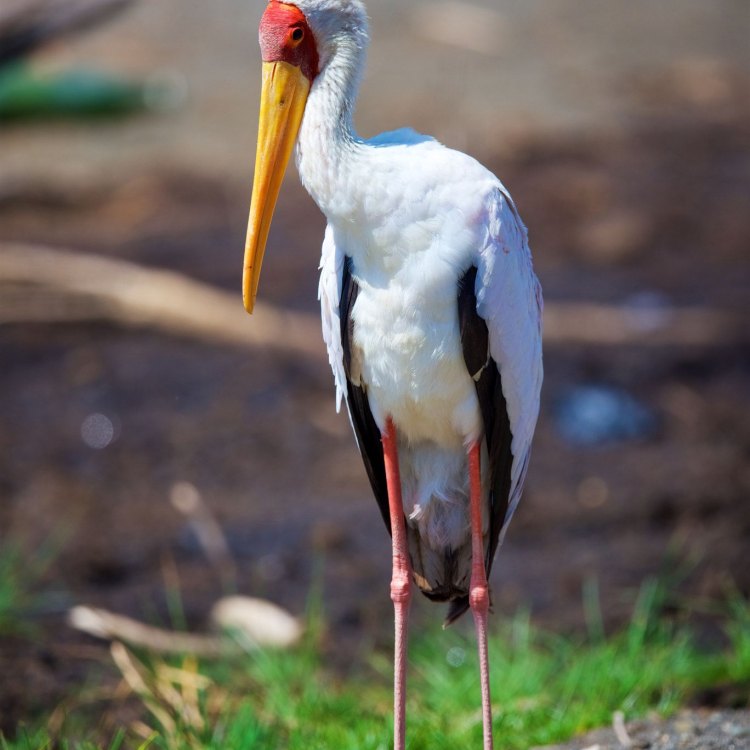
Stork
- Adult Size: Varies depending on the species (ranging from 1 to 6 kg)
- Average Lifespan: 20 to 30 years
- Reproduction: Sexual
- Reproductive Behavior: Monogamous
- Sound or Call: Loud vocalizations including bill-clattering and throaty calls
- Migration Pattern: Migratory, but some species are sedentary
- Social Groups: Solitary or in small groups
- Behavior: Diurnal and highly territorial
- Threats: Habitat loss, pollution, hunting, and climate change
- Conservation Status: Varies depending on the species (ranging from Least Concern to Critically Endangered)
- Impact on Ecosystem: Important role in wetland ecosystems as top predators and seed dispersers
- Human Use: Cultural symbolism, hunting, and birdwatching
- Distinctive Features: Long neck and legs, large beak, and elaborate courtship displays
- Interesting Facts: Storks are known for their migration patterns and their unique nesting behaviors. They build large stick nests in trees or on man-made structures, and some species even form communal nesting colonies. Storks are also famous for their mythological and cultural significance in various societies around the world.
- Predator: Large birds of prey and mammals
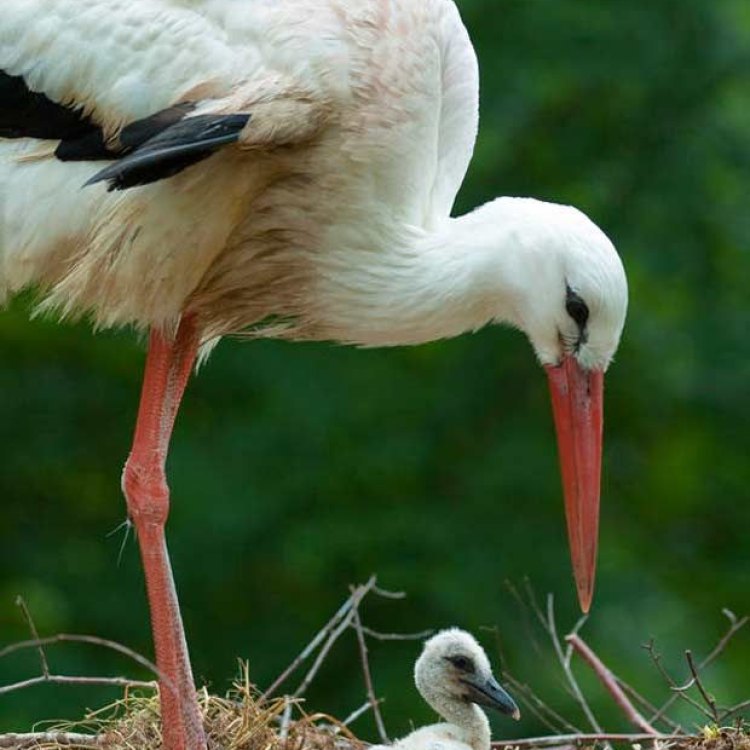
Ciconiidae
The Amazing World of Storks: From Long-Necked Birds to Mythological Symbols
The graceful and elegant stork has captured the imaginations of humans for centuries with their majestic appearance and unique behaviors. These long-necked birds are found in various parts of the world, from Africa and Europe to Asia and the Americas. They have become an integral part of many cultures and hold great significance in the natural world. In this article, we will delve deeper into the world of storks, exploring their distinctive features, behaviors, and roles in the ecosystem PeaceOfAnimals.Com.A Snapshot of Storks
Storks come in a variety of species, and their physical characteristics vary depending on their habitat and location. On average, they range from 1 to 6 kilograms in weight, making them relatively large birds. Their long necks and legs give them a distinctive appearance, and their large beaks are used for catching prey and building nests.Storks have an average lifespan of 20 to 30 years, with some species living even longer in captivity. They are social birds, either living solitary or in small groups. These birds are diurnal, meaning they are active during the day, and their territorial behavior is highly protective of their nesting sites.
The Courtship Rituals of Storks
The reproductive behavior of storks is both fascinating and unique. These birds are monogamous, which means they mate for life. The bond between the stork couples is a strong one, and they often choose to return to the same nesting sites and mate with the same partner every year Superworm.During the breeding season, storks perform elaborate courtship rituals, from vocalizations to impressive aerial displays. Their loud vocalizations, including bill-clattering and throaty calls, echo through the sky as they try to attract a mate. Their courtship displays involve intricate flight patterns, where the male and female birds fly in unison, gliding and swooping around each other in a synchronized manner.
The Role in the Ecosystem
Storks play a crucial role in the ecosystem, primarily in wetland environments. These magnificent birds are apex predators, feeding on smaller animals such as fish, frogs, and insects. Through their foraging and hunting activities, they help maintain a balance in the food chain and prevent overpopulation of prey species.Apart from being top predators, storks also have a significant impact on seed dispersal. As they move from one location to another in search of food, they unknowingly carry seeds on their feathers and bills, helping in the spread of plants and promoting biodiversity.
The Threats to Storks
Unfortunately, storks face numerous threats in their natural habitat. One of the most significant threats is habitat loss due to urbanization and industrialization. As wetlands and grasslands are converted into human settlements and agricultural areas, storks lose their food sources, nesting sites, and breeding grounds.Pollution is another significant threat to storks. These birds are particularly sensitive to the harmful effects of pesticides and other pollutants present in their water sources. Climate change also poses a threat as it alters the migration patterns of storks and affects the availability of food and nesting sites.
Humans also pose a threat to storks through hunting and hunting. In certain cultures, storks are hunted for their meat and feathers, and in some places, they are viewed as a nuisance and killed to protect crops and fish.
Conservation Efforts and Human Use
The conservation status of storks varies depending on the species. Some are listed as Least Concern, meaning they are not currently at risk of extinction, while others are listed as Critically Endangered, facing a high risk of extinction. In recent years, conservation efforts have been made to protect storks and their habitats, including setting up protected areas and implementing laws to regulate hunting and pollution.Apart from their ecological importance, storks also hold a significant cultural and symbolic value to humans. In many societies, storks are heralds of good luck and fertility, and their arrival is seen as a promising sign. They are also often associated with childbirth and are used as symbols for newborns and new beginnings.
In some cultures, storks are viewed as sacred and revered animals, and harming them is considered a taboo. In contrast, in other societies, storks hold a practical use for humans. For example, in certain areas, storks are bred and used to control pests and protect crops.
Interesting Facts about Storks
Storks are not just fascinating birds; they are also full of surprises. One of the most well-known facts about storks is their migration patterns. These birds are known for their long-distance migrations, with some species traveling thousands of kilometers every year to reach their breeding grounds.Another interesting fact about storks is their unique nesting behavior. Storks build large stick nests in trees or on man-made structures, such as chimneys, buildings, and telephone poles. What's more, some species even form communal nesting colonies, where numerous storks build their nests close to each other, adding to the impressive sight of their aerial habitats.
Storks are also famous for their role in various mythologies and cultural beliefs. In Greek mythology, storks were believed to bring newborn babies to their families, which is where the famous tale of the stork delivering the baby comes from. In ancient Egyptian culture, storks were seen as a symbol of creation and rebirth, associated with the goddess of fertility, Isis.
Predators of Storks
Despite their territorial behavior and impressive courtship displays, storks are not entirely immune to threats in the wild. Large birds of prey, such as eagles and hawks, pose a danger to storks, as they are known to prey on their young and vulnerable chicks. Mammals, such as foxes, also pose a threat to stork eggs and chicks.In Conclusion
Storks are magnificent birds that have captured our fascination and admiration for centuries. From their distinctive appearance to their unique behaviors and ecological significance, storks continue to play a vital role in the natural world. As they face various threats in the wild, it is essential to continue efforts to protect and conserve these incredible creatures, ensuring their survival for generations to come.
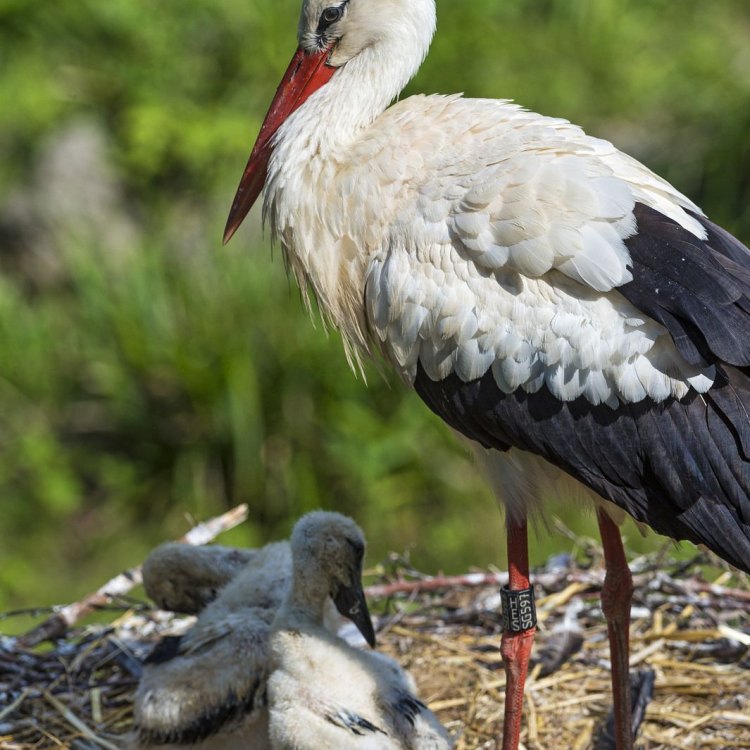
The Majestic Stork: Nature’s Graceful Bird
Disclaimer: The content provided is for informational purposes only. We cannot guarantee the accuracy of the information on this page 100%. All information provided here may change without prior notice.

